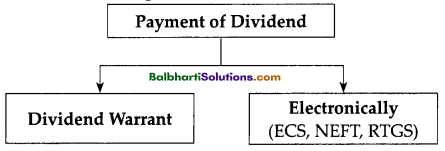By going through these Maharashtra State Board Secretarial Practice 12th Commerce Notes Chapter 8 Correspondence with Depositors students can recall all the concepts quickly.
Maharashtra State Board Class 12 Secretarial Practice Notes Chapter 8 Correspondence with Depositors
Introduction:
→ Deposit is a short-term source of finance for a company.
→ It is an unsecured source of borrowed funds to the company.
→ It is used to satisfy the working capital needs of a company.
![]()
→ A public company having a net worth of not less than 100 crore rupees OR a turnover of not less than 500 crore rupees AND which has obtained the prior consent of shareholders through special resolution, can raise public deposit.
→ A private company can accept deposits from its members or directors or relative directors not more than 100 percent of its aggregate of paid share capital and free reserve.
→ Public companies can raise deposits maximum up to 25 percent of its aggregate of paid share capital and free reserve.
→ Government companies can raise a maximum of 35 percent deposits of their aggregate of paid share capital and free reserve.
→ The company cannot accept or renew deposits on demand.
![]()
→ Depositors are the creditors of the company.
→ The company can accept deposits for a minimum period of 6 months and a maximum period of 36 months.
→ The company is liable to pay regular interest at a fixed rate and repay the principal amount as on maturity.
→ Default in repayment can result in punishment in the form of a fine and/or imprisonment.
Points to be remembered while corresponding with depositors:
→ While writing letters to the depositors, the secretary should follow legal provisions.
→ He should communicate with courtesy.
→ His letter should be brief and prompt.
→ Correspondence with the depositors should increase the goodwill of the company.






